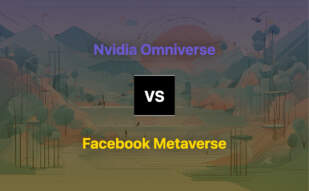WebAR is pivotal in the development of the metaverse, a comprehensive digital twin of our physical world. Serving as an accessible tool, it enhances the potency of storytelling, facilitating meaningful engagements, and providing a frictionless entry point into augmented reality (AR) experiences. Assisting businesses like Vans and Coca-Cola to boost their campaigns and customer engagement, WebAR holds immense potential for the future of digital reality.

In this article, you’ll learn about the role, benefits, and applications of WebAR in the metaverse, and understand its trajectory towards creating a user-centric digital reality.
Defining the Real-World Metaverse
The understanding of a ‘real-world metaverse’ is essential to grasp the evolution and future potential of augmented reality (AR). AR offers possibilities that go beyond mere simulations, presenting a blend of physical and digital realities that is increasingly referred to as the ‘real-world metaverse’.

Exploring the concept of a ‘real-world metaverse’ and its emergence
Unifying geographically anchored XR – a term referring to mixed, augmented, and virtual reality scenarios – the ‘real-world metaverse’ echoes the possibility of a parallel digital universe, anchored in the physical world. It originates from the concept of the “metaverse” – a term first coined in Neal Stephenson’s 1992 science fiction novel, Snow Crash, where humans interact with each other and software agents, in a 3D virtual space that includes a virtual reality-based Internet.
Over the years, this concept has slowly been transforming into reality. Powered by evolving technologies like AR, the entire AR ecosystem, and distributed networks, we are experiencing the emergence of a digital layer over our physical world.
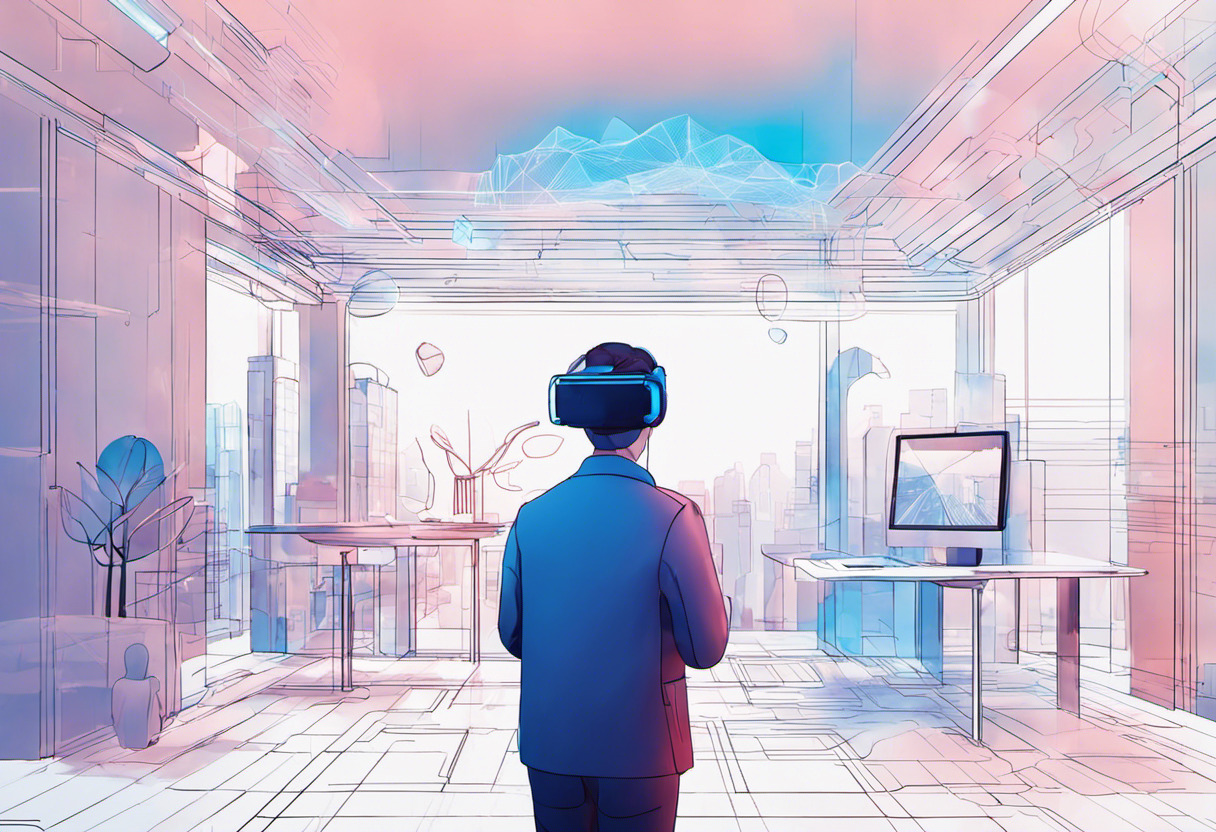
The prominence of AR as a potent storytelling tool, enhancing their potential to engage audiences in an intimate, meaningful way has been succinctly explained in this guide to WebAR . Resonating with our key data point, AR is no longer a novelty but a compelling engagement tool for brands.

Examining the ‘digital twin’ of our physical world and its implications for brands and individuals
As the ‘real-world metaverse’ unfolds, we see the construction of a ‘digital twin’ – a digital replica of our physical universe, shaped by users’ neural behaviour, interactions, and geographically anchored XR. This digital counterpart shares a symbiotic relationship with the physical world, affecting and being affected by changes in the physical environment, in real-time.
For brands and individuals alike, the emergence of this ‘digital twin’ represents a vast pool of opportunities. Here are some of the significant implications:
- Branding: The real-world metaverse opens new avenues for branding, giving companies the potential to project ‘digital storefronts’ or show ads in this parallel universe.
- Engagement: With reality as the canvas, brands can create compelling AR experiences, fostering more profound engagement.
- Market Research: The digital twin offers insights into user behaviour in an unprecedented manner. Since the metaverse mirrors users’ neural interactions, it can give exceptionally accurate data on consumer behaviour.
- Personalization: The metaverse can tailor digital experiences to individual users, based on their behaviour, preferences, and interactions in the digital and physical realms.
| Before Metaverse | After Metaverse | |
|---|---|---|
| Branding | Limited to physical spaces and conventional media | Scope for digital storefronts, ads in the parallel universe |
| Engagement | Uses traditional storytelling tools | Can leverage the potential of AR for compelling stories |
| Market Research | Relies on surveys and indirect data | Can provide exceptionally accurate data through metaverse interactions |
As technology continues to advance and digital reality embeds itself further into our physical world, an understanding of the ‘real-world metaverse’, its functionalities and its implications for brands and individuals will become increasingly important.
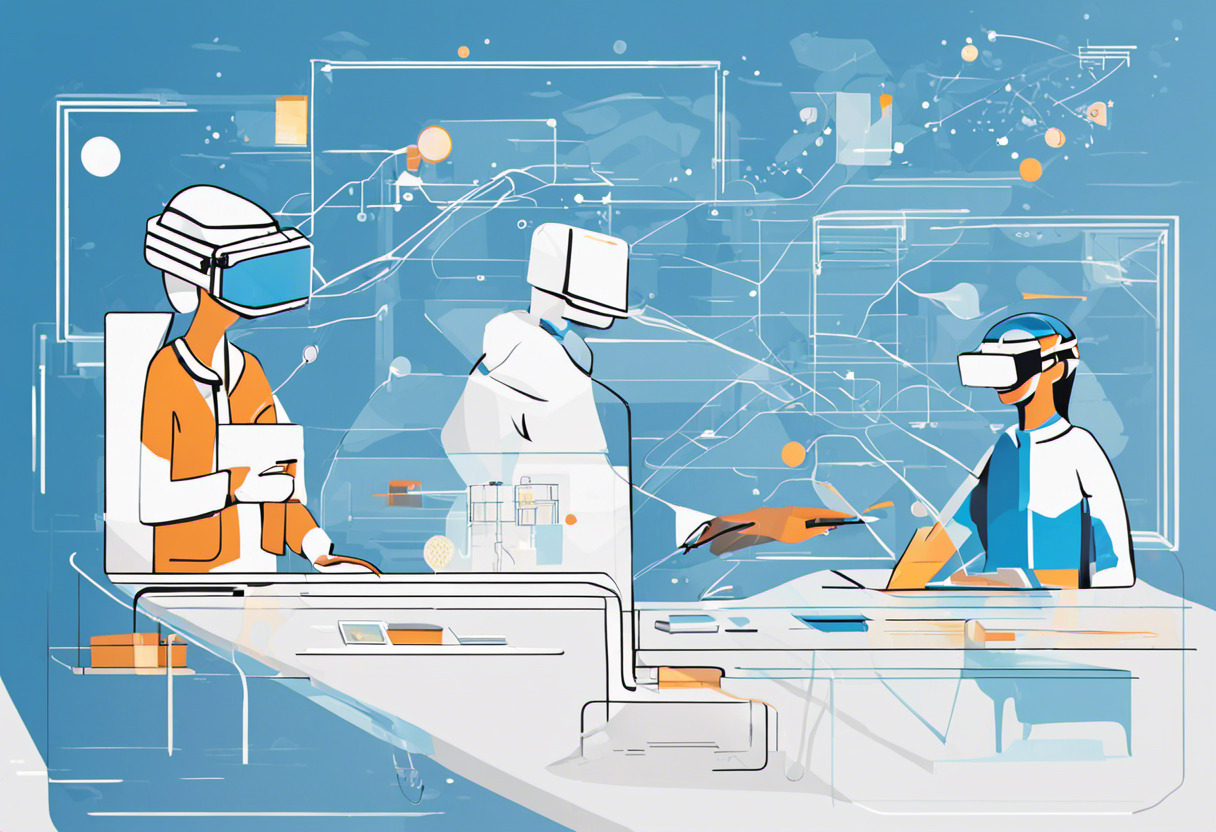
Understanding WebAR’s Impact in Activating the Digital Layer of Our Physical World
As the line between the digital and physical worlds becomes increasingly blurred, the development of technologies such as WebAR plays a crucial role in shaping the resulting user-centric metaverse. WebAR, or Web-based Augmented Reality, provides a more accessible gateway for users worldwide to interact with augmented reality (AR) experiences, bridging the gap between our physical world and its digital counterpart.
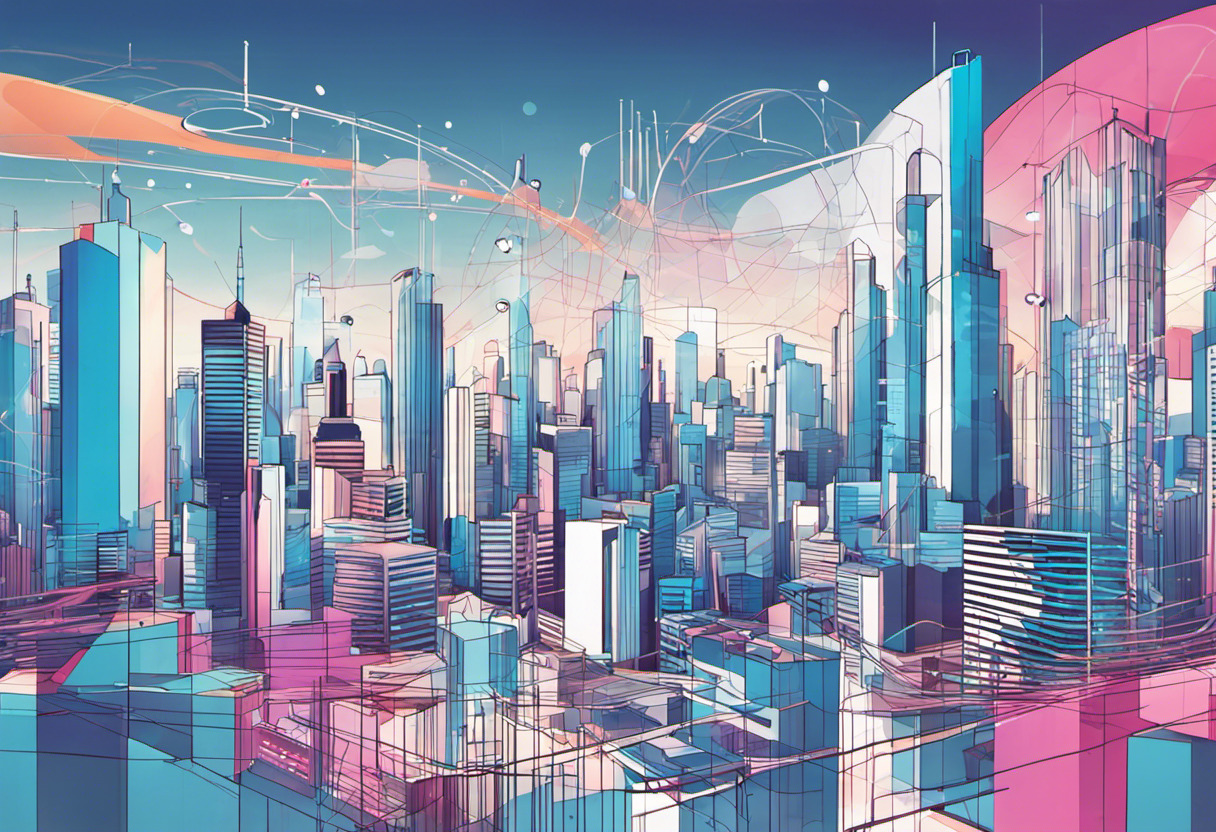
WebAR: Transcending Boundaries and Breaking Location Barriers
One of the most intriguing aspects of WebAR is its capacity to transcend geographical boundaries. Unlike traditional AR which often requires a specific application, WebAR enables users all over the world to engage in interactive AR experiences through their web browser. This removes barriers associated with downloads and device compatibility, providing a more inclusive and international user experience.
Moreover, being geographically anchored, WebAR encourages AR experiences to be tailored to the user’s exact location, leveraging geographically-specific content which adds a layer of personalisation and depth to each interaction.

Highlighting WebAR’s Core Features
WebAR’s capabilities extend beyond breaking location barriers and enabling AR campaigns. Some of its most prominent features include:
- Seamless integration with other web technologies – being browser-based, WebAR can be easily combined with existing technologies for an enriched user experience.
- No need for AR-specific hardware – as it functions on a web browser, WebAR removes the need for users to have specific AR devices.
- User-focused content creation – With WebAR, content can be designed to be interactive and user-centric, leading to higher levels of user engagement.
What does this mean for the wider metaverse? It signifies that the digital layer of our existence can be presented in a format that starkly brings the metaverse closer to reality.
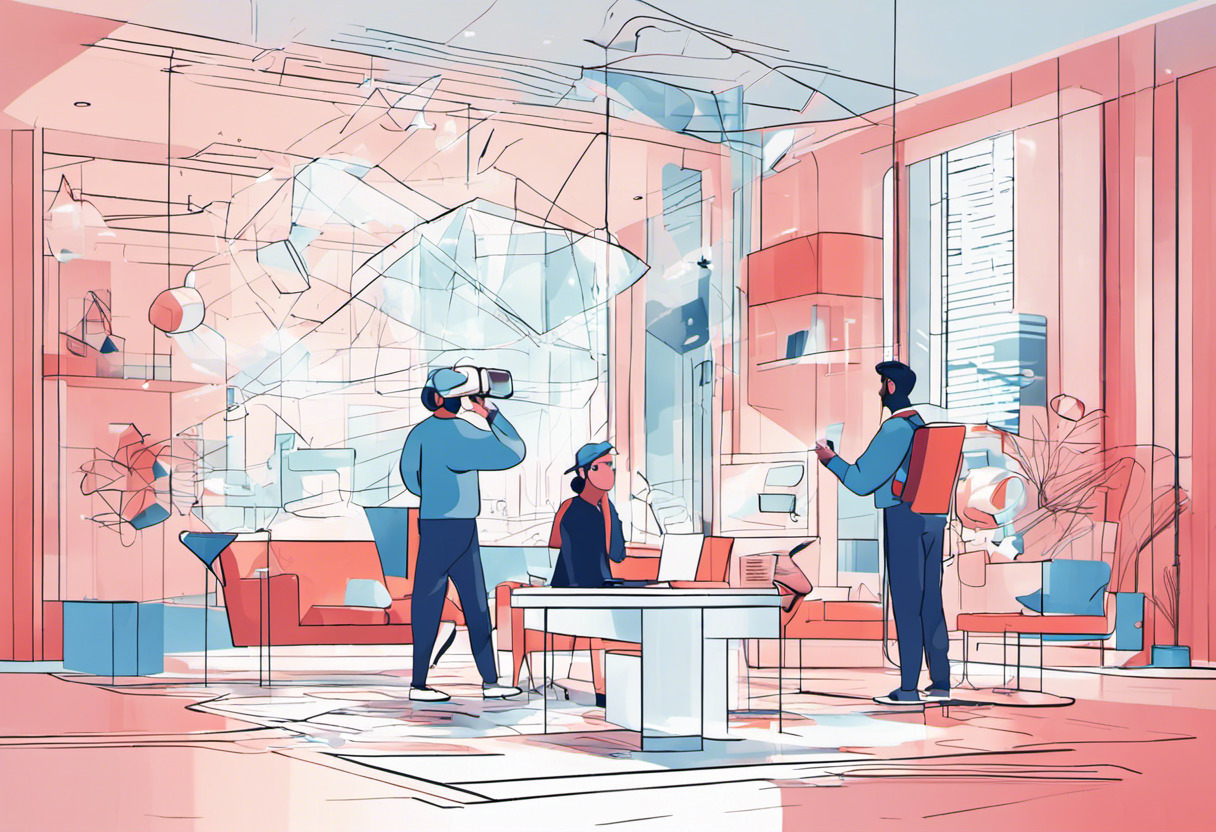
Insights into WebAR’s Accessibility and Usability
By allowing users to access AR-enabled content from their web browsers, WebAR removes several obstacles often associated with the adoption of AR. The convenience that WebAR provides sets a new benchmark in terms of usability and accessibility, rendering it a key catalyst in the creation of a digitally enabled metaverse.
This ease of access in turn allows for a wider reach and ultimately, greater interaction with AR content. Tapping into the potential of this seamless entry point will undoubtedly be crucial for brands looking to engage with their audiences in meaningful, memorable ways. As affirmed by this exploration of WebAR’s potential, the technology provides a silver bullet of sorts for bridging the digital gap, unlocking the door to the future of augmented reality on the web.
The Numbers Speak: WebAR’s Effectiveness Unveiled
| Advantages | WebAR |
|---|---|
| User Engagement | High |
| Accessibility | Wide |
| Personalization | High |
From the perspective of accessibility and experience customization, the usability of WebAR truly shines through. As our interactions with technology become more centered on intuitive and immersive experiences, understanding WebAR’s role is fundamental in the continuing evolution of the metaverse.
Business Potential and Upshot of WebAR in the Expanding Metaverse
Augmented Reality (AR) is indisputably catapulting businesses into another level by creating immersive and interactive experiences. A significant contributor to this evolution is WebAR, which brands are increasingly leveraging in their campaigns for more profound customer engagement.
Case Study: Impact of AR on High-Profile Brands
Several high-profile businesses, from clothing giants like Vans to iconic beverage manufacturers such as Coca-Cola, are embracing WebAR technology. These forward-looking companies are investing heavily in WebAR to create unforgettable AR experiences that resonate with their audience and warrant increased engagement.

Vans, for example, have utilized the power of WebAR to develop interactive digital shoe walls. This novel approach allows customers to visualize and interact with available product designs in a virtually constructed store. It provides unparalleled buying experience by seamlessly merging the physical and digital storefront. Hence, enabling shoppers to virtually “visit” the store without stepping out from the comfort of their homes.
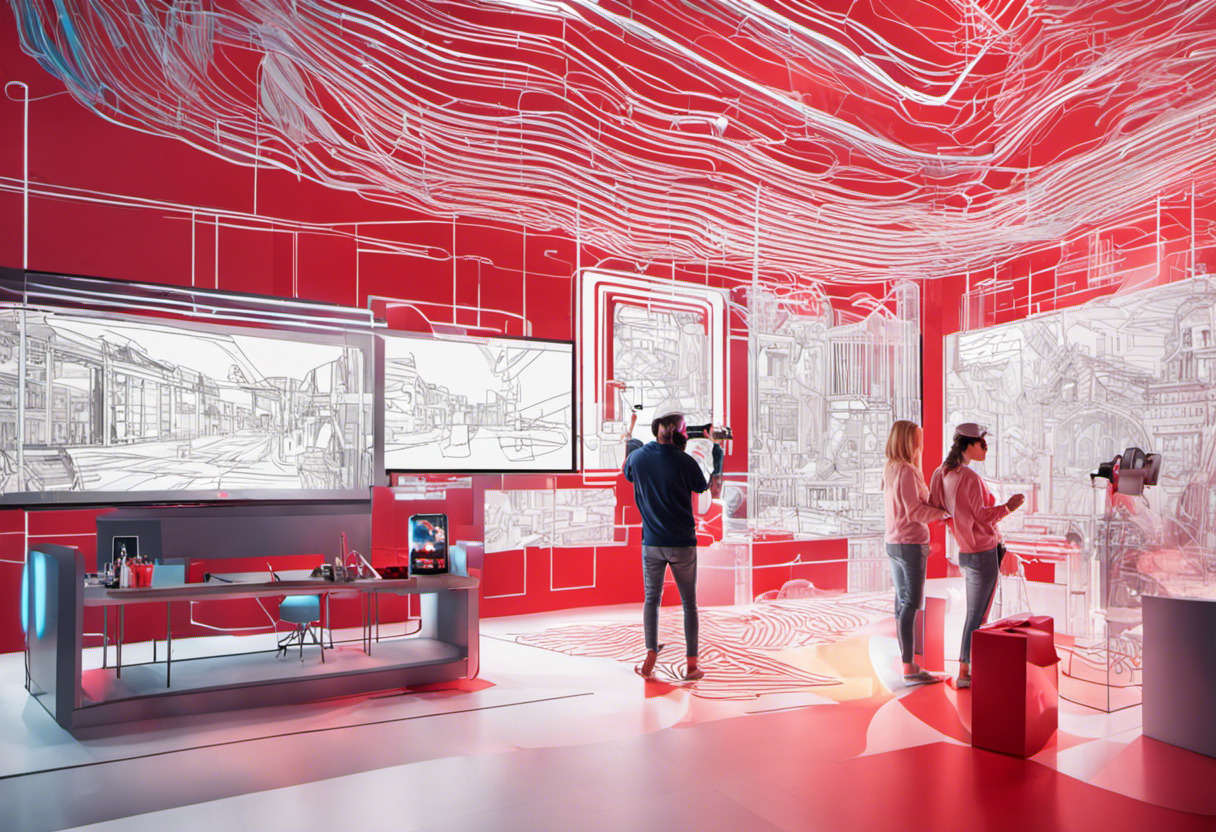
Meanwhile, Coca-Cola has harnessed WebAR’s power to revolutionize its marketing campaigns. In an innovative turn, the wistful Coca-Cola polar bear was brought to life in the digital sphere, enthralling audiences with a captivating AR experience that goes beyond mere product engagement.
The Significant Traction in Businesses
These notable hallmarks are just snapshots of the enormous possibilities that WebAR offers. Businesses are recording significant acceleration in key performance indicators, testifying WebAR’s potential in boosting brands’ objectives.
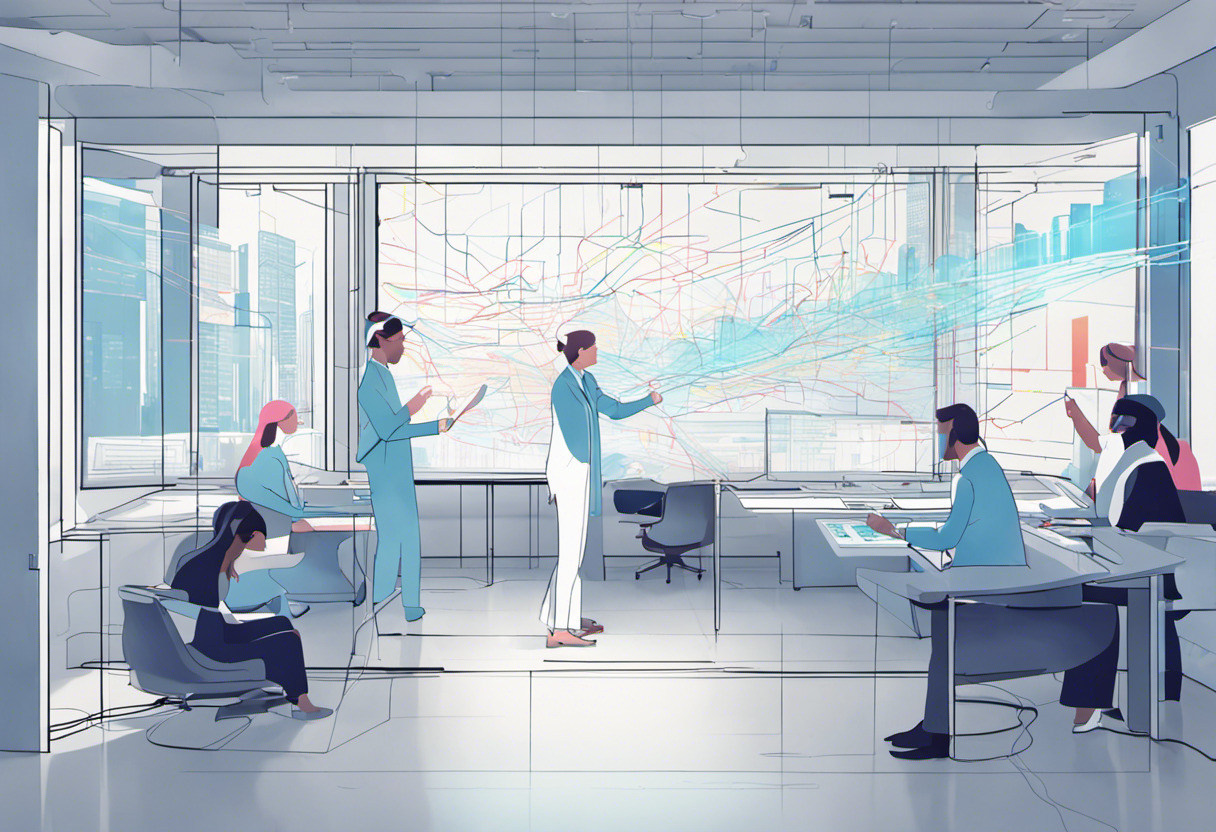
The returns on investment for Bloomingdale’s, for instance, are significant: a tremendous +22% conversion rate and a +38% engagement rate after harnessing WebAR. The impact of WebAR on the marketing ROI of other brands has been equally impressive, with notable leaps in click-through rates, average session duration, and user interactions.
A Catalyst for Business Upscaling in the Metaverse
Now, let us delve deeper into how WebAR is turning around the face of business in the metaverse.
- User Engagement: WebAR engages users in a more interactive way by making digital information visually interesting, thus increasing user satisfaction and engagement.
- Brand Awareness: Companies creating memorable AR experiences are witnessing a significant uptick in brand awareness and loyalty.
- Conversion Rates: By enhancing user experience, WebAR has a direct positive impact on conversion rates. Brands appropriate immersion, interactivity, and novelty of WebAR to keep users longer on their digital platforms, leading to better conversion rates.
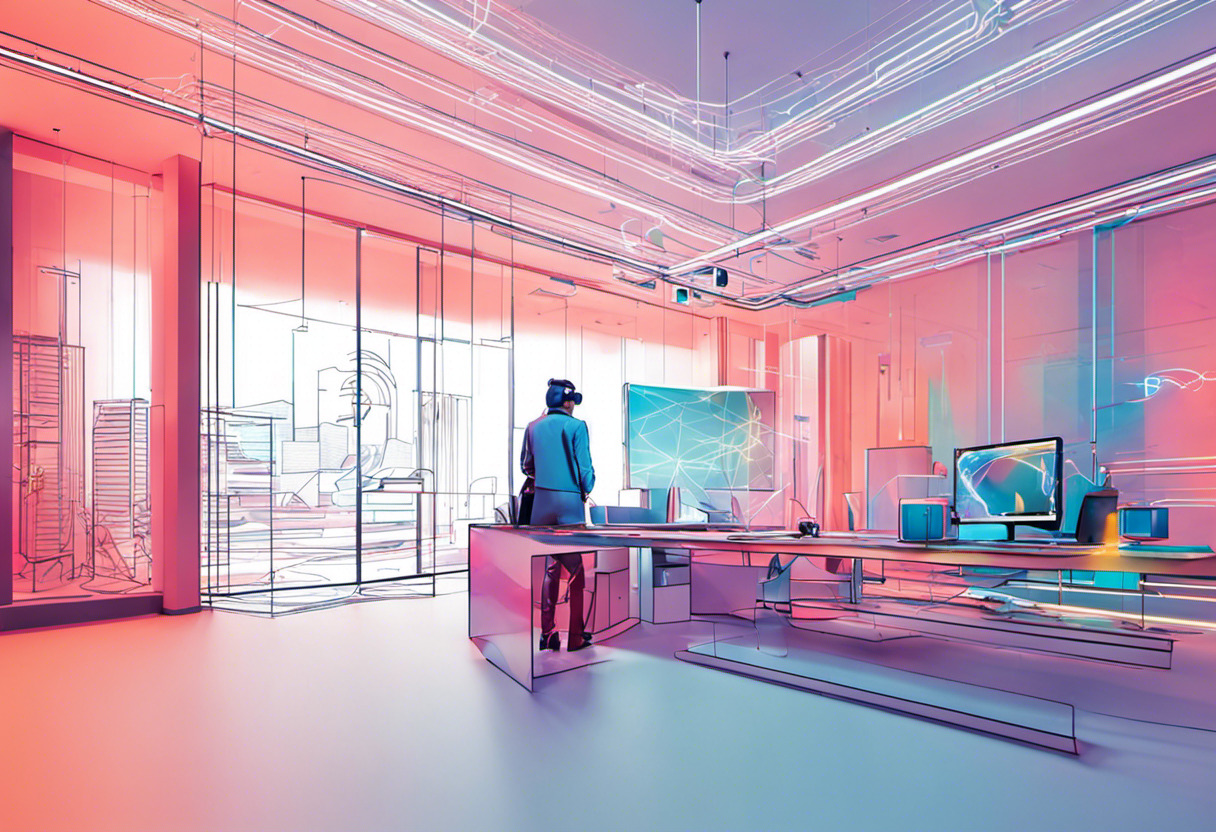
Navigating the Metaverse with User-Friendly WebAR
As technology evolves, so does our ability to tap into immersive environments, blurring the line between virtuality and reality. This evolution has given rise to metaverses where the integration of accessible tools, such as Web-based Augmented Reality (WebAR), has altered the landscape of digital user experience.
Integrating Across a Variety of Platforms
The adoption of WebAR across different platforms is expanding, amplifying user engagement, and enriching content with alternate reality experiences. From social media platforms to e-commerce websites, the easy-to-integrate nature of WebAR is providing an immersive and interactive layer to digital interfaces.
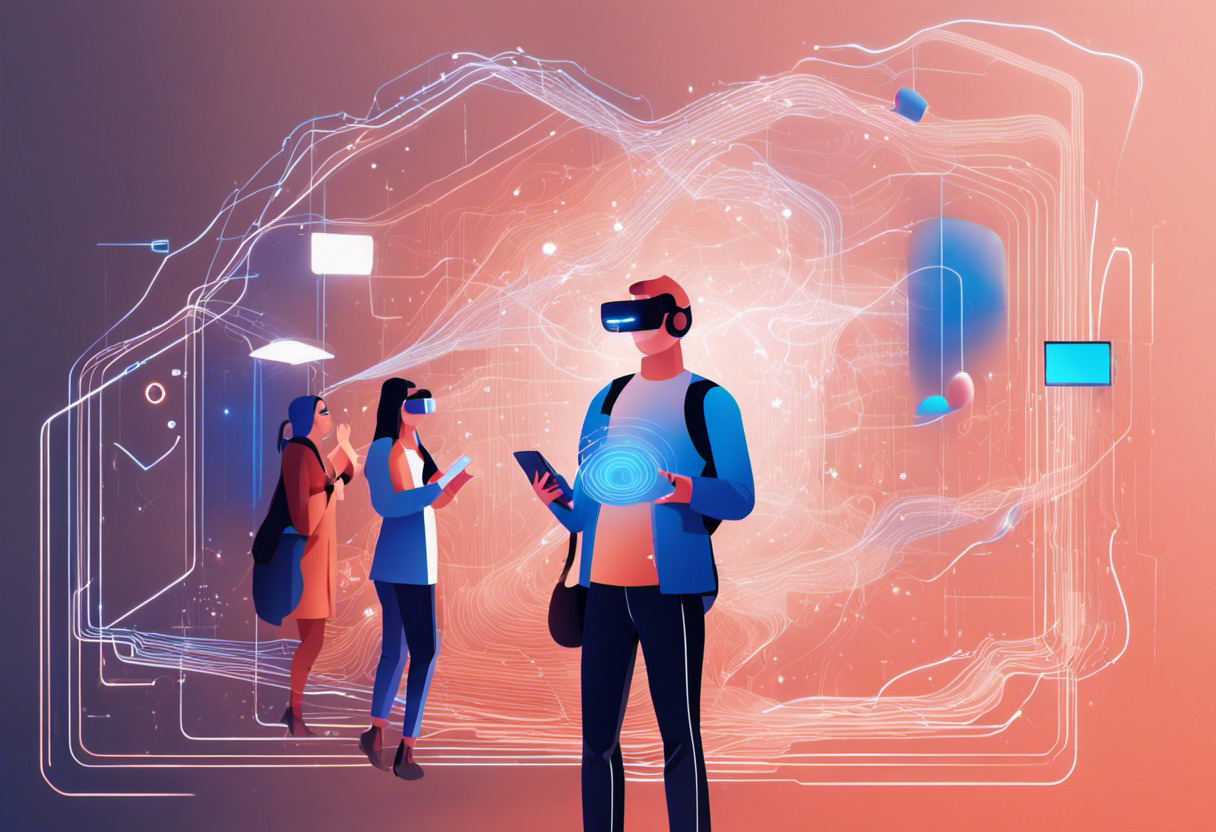
For instance, Instagram and Snapchat have harnessed the power of WebAR to create engaging filters and lenses that users can experiment with. Similarly, e-commerce websites are adopting WebAR to provide virtual try-ons and product previews that enhance customers’ buying experience providing a more informed purchase decision.

Breaking Barriers: WebAR for Universal AR Access
WebAR brings AR experiences to a wider audience, using a more extensive range of devices, hence outshining app-based augmented reality in terms of accessibility. Unlike traditional AR, WebAR does not require users to download specific apps, reducing barriers to entry and facilitating widespread use.
This universal access is a critical driver for metaverse appreciation and participation. It facilitates the creation and sharing of AR experiences on a global scale, transforming how users perceive and interact with digital interfaces.
Consequences of Improved AR Accessibility
WebAR, in essence, democratizes the metaverse. The broadened access courtesy of WebAR allows a diverse spectrum of users to participate in, contribute to, and leverage the metaverse’s capabilities. This increased inclusivity enables the creation of geographically anchored XR experiences, fostering a cultural exchange of ideas, perspectives, and narratives within the metaverse.
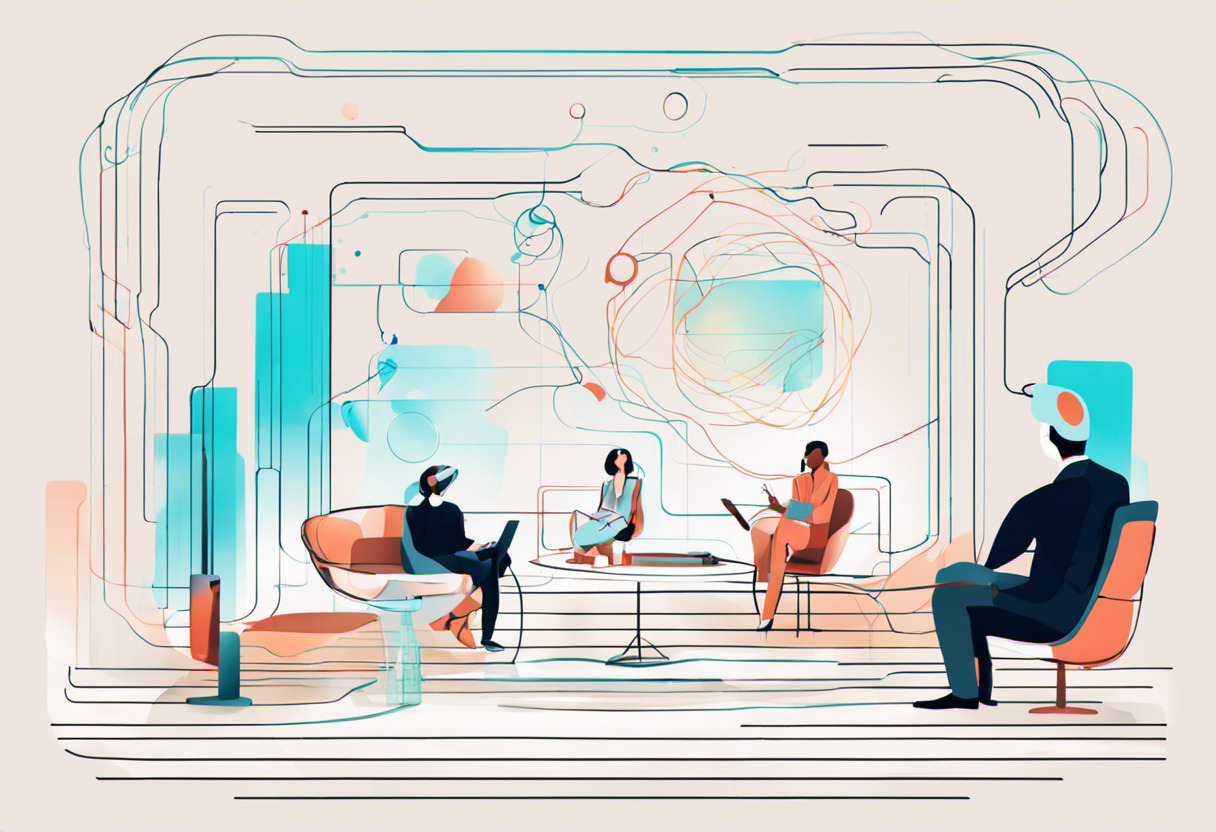
This unrestricted sharing and distribution of AR experiences across different platforms give rise to a cohesive and interconnected AR ecosystem. Such an environment bolsters the user-centric nature of the metaverse, where freely flowing ideas and experiences create a space that continually evolves and adapts to its user base.
The Future of the Metaverse: An Augmented Reality Unveiled
As we delve into the future of the metaverse, a one-dimensional virtual reality alone no longer seems sufficient. The trajectory of WebAR propels us into a blended realm where virtuality meshes with physicality. This is where the shared digital and physical experiences truly reign supreme.
A New Reality: Personalized & Engaging Experiences
Within this blended realm, the potential of WebAR in crafting personalized AR experiences is beyond measure. Not only does it redefine digital interaction, it also breathes engagement into every feature, enhancing the user’s holistic experience within the metaverse.
- Interactivity: WebAR brings a new layer of interaction to the table, allowing users to actively participate rather than remaining passive spectators.
- Personalization: With the ability to tailor digital elements based on user preferences, WebAR fosters an atmosphere of inclusivity and highlights the need for personalized marketing.
- Engagement: Dynamic AR content ensures that users are active participants in their digital journey. Through interactive storytelling, businesses can communicate with audiences on a deeper level, fostering brand loyalty by creating shared memories.
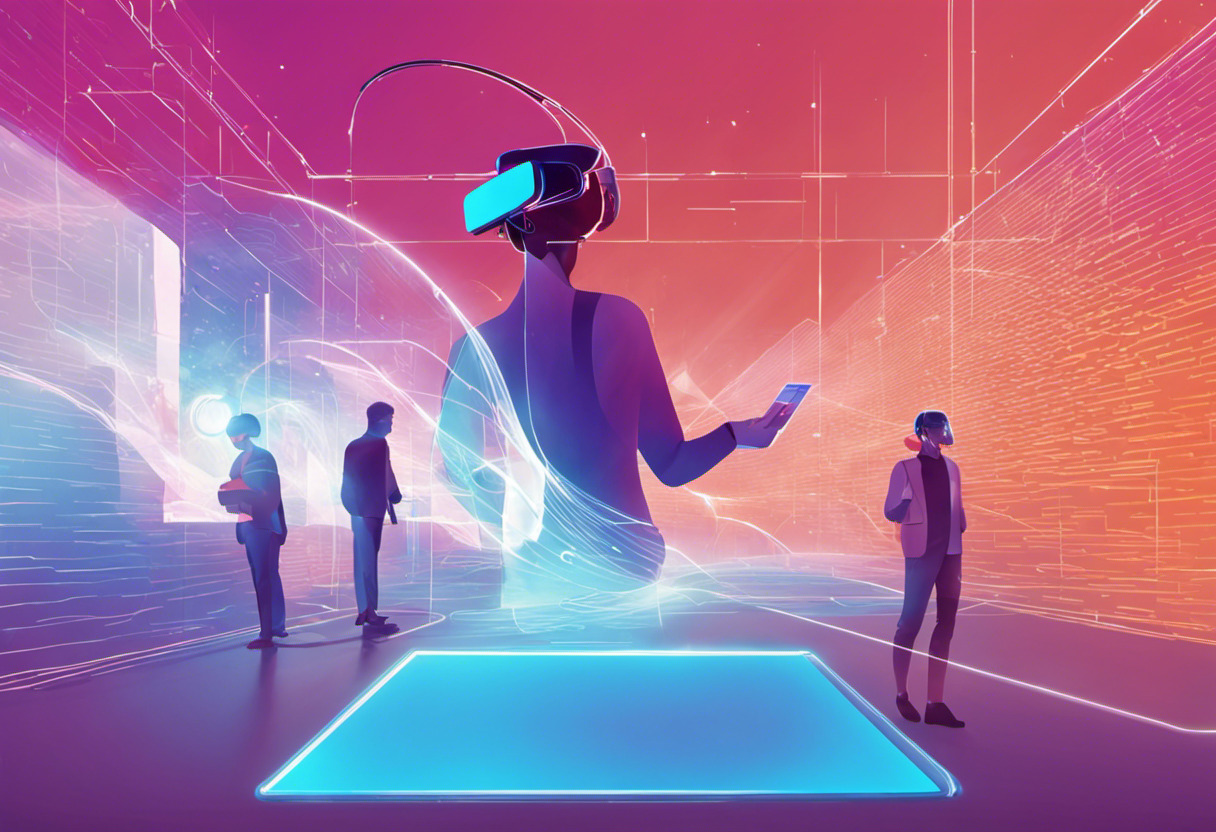
In the interconnected universe of the metaverse, geographically anchored XR becomes a reality. This opens up endless possibilities for creating personalized environments by blending the physical and the digital. Staging AR experiences that are seamlessly accessible across multiple platforms, rather than being limited to a single one, becomes the norm.
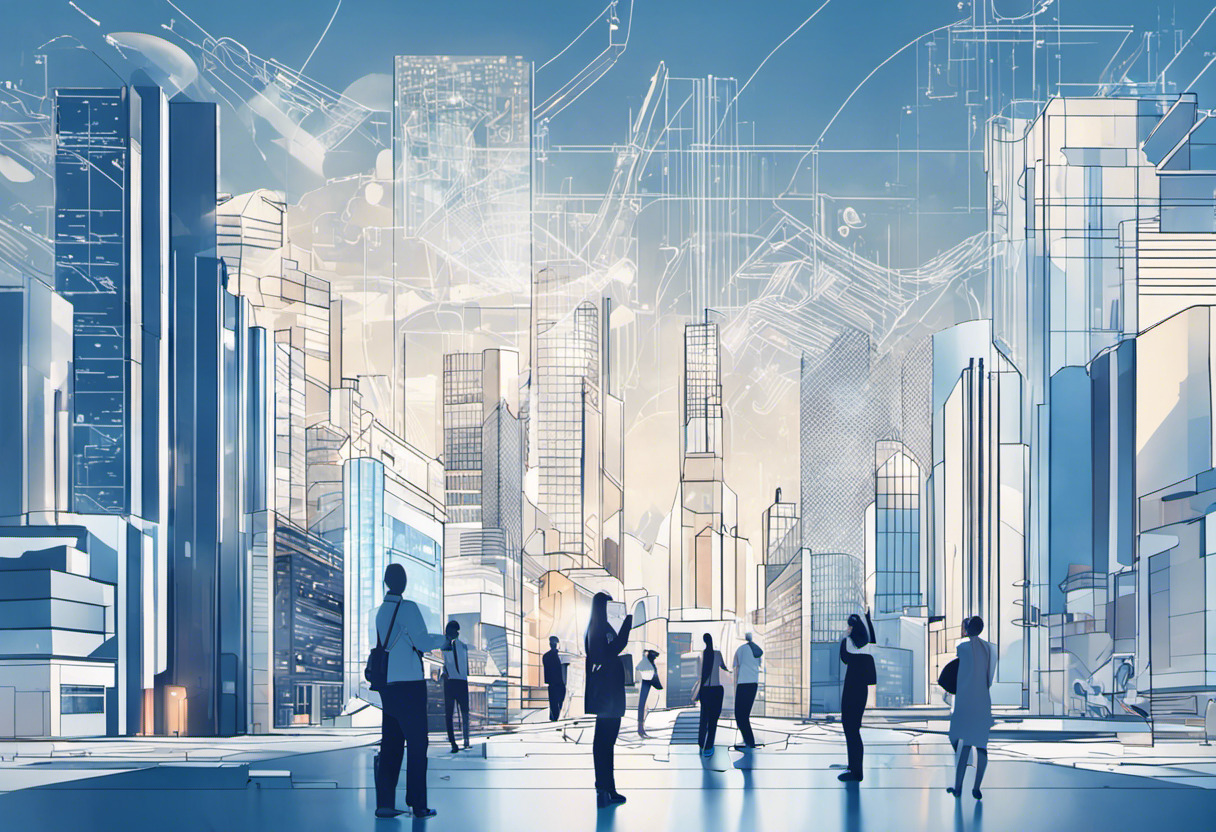
The Contribution to a User-Centric Metaverse
WebAR’s greatest advantage manifests in its evolution alongside the metaverse. It fosters the creation of diverse AR experiences that can live across numerous platforms. This ensures that the digital twin of our physical world is readily available to everyone, everywhere.
In the context of an evolving AR ecosystem, WebAR acts as a trailblazer. It constitutes an integral part of an extended reality where virtual, physical, and augmented realities converge to offer a comprehensive user experience. Transitioning across these realities becomes less of a hurdle and more of a norm, thanks to the interconnected nature of the metaverse.
Here is a snapshot of how WebAR can craft engaging AR experiences in contrast to traditional digital marketing methods:
| Engagement Facet | Traditional Methods | WebAR |
|---|---|---|
| Interactivity | Limited to Non-AR Platforms | Expansive Interaction via Multiple Platforms |
| Personalization | Restricted Customization | Vast Customization Options |
| Engagement | Often Passive | Active Engagement |
The future of the metaverse leans towards a digitally synergistic existence, proposing a redefinition of the future of humanity at large. To learn more about how QR codes are becoming a hot trend for WebAR applications, click here.

As the metaverse continues to evolve, the possibilities WebAR holds are virtually (pun intended) limitless. The future certainly holds an intriguing blend of augmented and virtual realities, promising a metaverse that is truly user-centric.
Tiffany Brise
Content writer @ Aircada, patiently awaiting a consumer AR headset that doesn’t suck.





